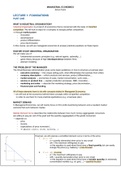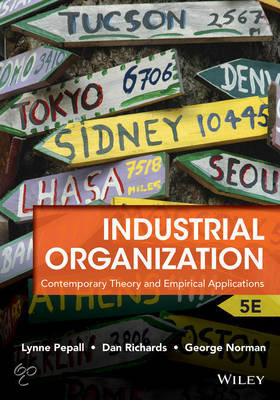Summary
Managerial Economics Summary - TEW & Trading Engineer - 16/20 First Seat
Course
Managerial Economics
Book
Industrial Organization
This summary includes all curriculum from the Managerial Economics lessons, taught to the second-year students of Trade Engineer and Applied Economics (TEW) by Mattia Nardotto and Christophe Crombez. I scored a 16/20 in my first seat with this summary. This summary is based on lessons notes, comple...
[Show more]
Preview 6 out of 37 pages
Summarized whole book?
Yes
Uploaded on
August 22, 2021
Number of pages
37
Written in
2020/2021
Type
Summary
managerial economics
industrial organisation
managerial economics tew
christophe crombez
mattia nardotto
managerial economics samenvatting
industrial organisation samenvatting
managerial economics handelsingenieur
Book Title: Industrial Organization
Author(s): Lynne Pepall, Dan Richards
Edition: november 2012 ISBN: 9781118250303 Edition: 1
Summary
Industrial Organizational Psychology
Summary
Managerial Economics Samenvatting - Handelsingenieur & TEW - 16/20 eerste zit
Summary
Samenvatting Managerial Economics TEW KUL
All for this textbook (4)
Institution
Katholieke Universiteit Leuven (KU Leuven)
Education
Toegepaste Economische Wetenschappen
Course
Managerial Economics
All documents for this subject (6)
By: juliehuisman2004 • 2 months ago
By: matissekemp • 2 year ago
By: Udikkevettemoeder • 2 year ago
By: chloevanoekel • 1 year ago
MANAGERIALECONOMICS






